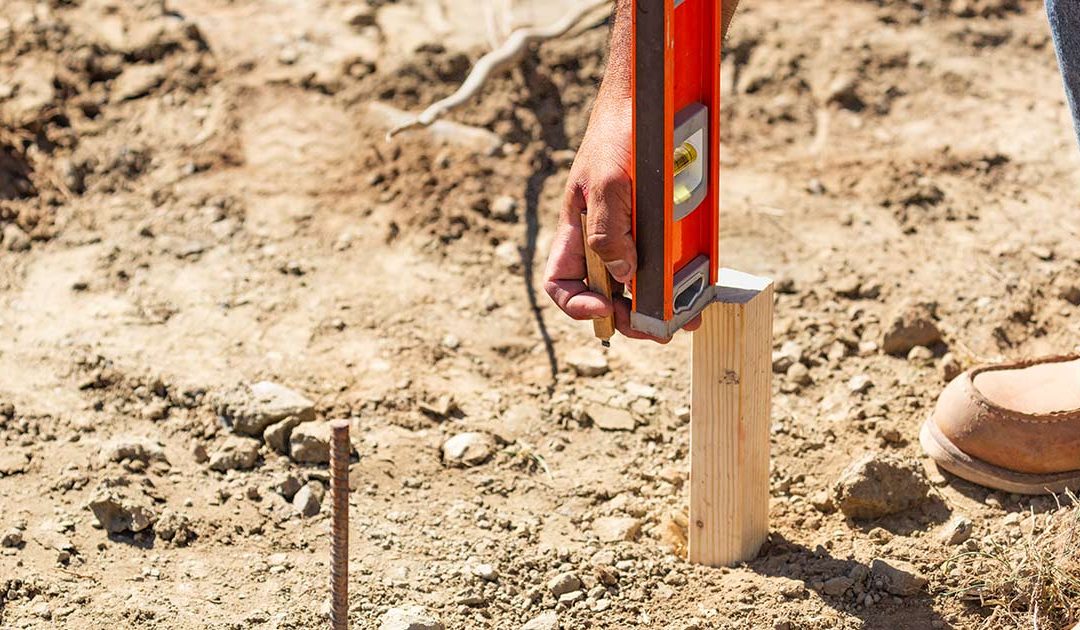Last Updated June 24, 2024
How to Level a Yard
Here is a quick guide on how to level your yard. Click any of the steps for more information below. Can it be done in less steps? Sure, but you will probably compromise the long term success. The amount of time it will varies greatly. Depending on the size of your yard, how uneven it is, and the amount of holes to fill.
- Step 1: Mow your lawn
- Step 2: Dethatch your lawn as needed
- Step 3: Dig up the grass in the sunken area of the lawn
- Step 4: Make a soil mix with topsoil, sand and compost
- Step 5: Fill sunken areas and holes with the soil mixture
- Step 6: Even out the entire lawn
- Step 7: Water your lawn
- Step 8: Reapply the soil mix as needed
The Importance of Yard Leveling
If you are looking for information on how to level a yard, you probably know it is instrumental in keeping your landscape aesthetically pleasing. A level yard provides stability to your outdoor landscape. It also allows you to avoid serious damage and costly repairs to your foundation.
Your lawn must slope away from your home gradually to allow rainwater to drain away slowly from your foundation. If rainwater runs toward your home, the water will accumulate around the foundation walls. This will cause moisture to build up. Weakening your foundation. It may even become more serious. Seeping through foundation walls and filling your basement with water.
If your home does not have a basement or is built on a slab, moisture can seep into the wooden floor joists. The water will rot the joists. Threatening your home’s structural integrity.
The problems don’t end there though. Poor leveling will also damage your gardens, trees, and landscaping.
As well as potential standing water issues. A breeding ground for mosquitos. Which are not only pests but carry diseases.
Reasons for Yard Leveling
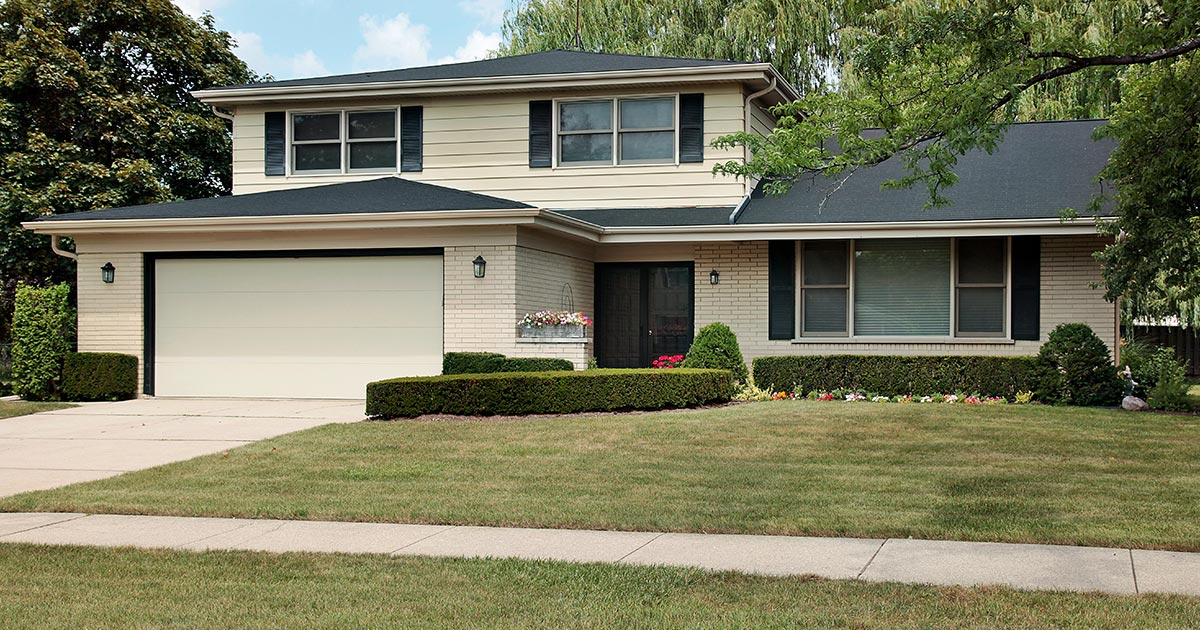
Even if you have leveled your yard in the past, landscape grading may be needed in cases where bumps and lums are created by:
- tree or brush removal
- sewer installation
- tree root growth
- damage from animals
- installation of new features (such as a pool)
- settling
- drainage issues
So over time, you will want to look for these signs that you need to level your yard.
How Do I Know if There is a Landscape Grading Problem?
The most simple way to check for yard leveling problems is to look for standing water. If you don’t have proper drainage, you know that you have a problem.
If you want to be more precise with your landscape grading, you can measure your yard’s slope. To do this you will need the following tools:
- Hammer
- Two 3 ft. long stakes
- 100+ ft. string
- Carpenter’s level
The ground around your home should slope away approximately 1/4-inch down for every foot away from your home. This comes to around 2 ft. per 100 ft. So at 100 feet from your house, the ground should be 2 ft. lower than at the base of your home.
To accurately measure the slope of your yard’s landscape grading grab a 3 ft. long wood stake. Drive it 1 ft. deep in the dirt at the bottom of your house. Then measure a 100 ft distance away from your house. At that spot drive a second 3 ft. long stake into the soil.
At ground level on the stake by the house attach a string. Run the string to the second stake. Attach it to the stake with the string level. Use a carpenter’s level to achieve this.
With the string attached to both stakes, measure the distance from the ground to the string on the far stake.
If you measure a drop from 3 inches to 2 feet, you may be able to do the leveling yourself. However, if the drop is greater than that, or it slopes upward, it is highly recommended that you hire a professional to grade the yard.
For very steep slopes you may consider planting ground covers or building terraces.
Yard Leveling Tools, Equipment, and Materials
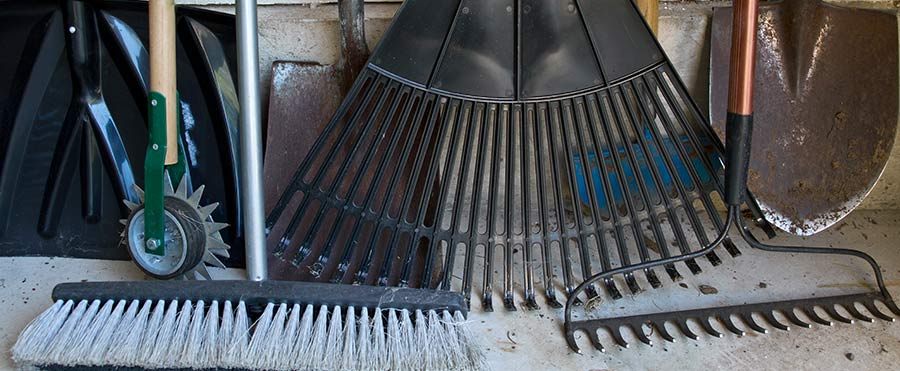
If you decide to take on the task of landscape grading yourself, you will need the following tools and equipment:
- Lawn Mower
- Hand rake
- Thatch rake [or dethatching machine]
- Plastic leaf rake
- Large push broom
- Shovel
- Edger
- Wheelbarrow
You will also need the following materials:
- Sand
- Topsoil
- Compost
How to Level a Yard [8 Steps]
So you’re ready to take on landscape grading yourself. Use these 8 steps for how to level a yard to ensure great results.
STEP 1: Mow Your Lawn
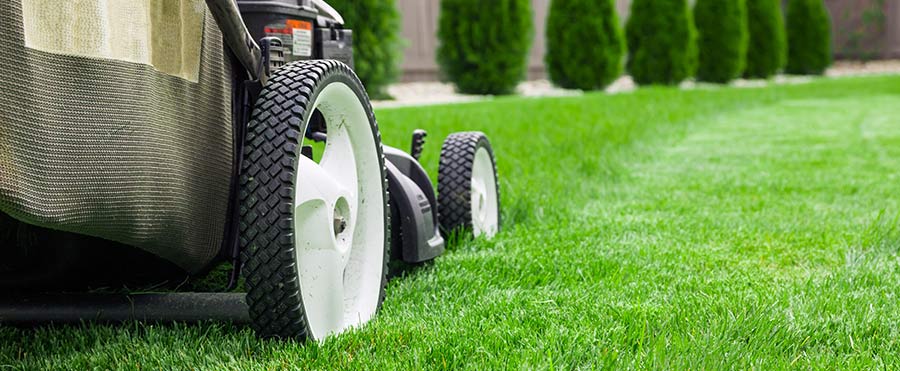
Yard leveling starts with mowing your lawn. Make sure you cut it short. But be careful not to cut it too short. If you cut to the point that the stems of the blades of grass are visible, then your grass may dry out.
STEP 2: Dethatch Your Lawn [As Needed]
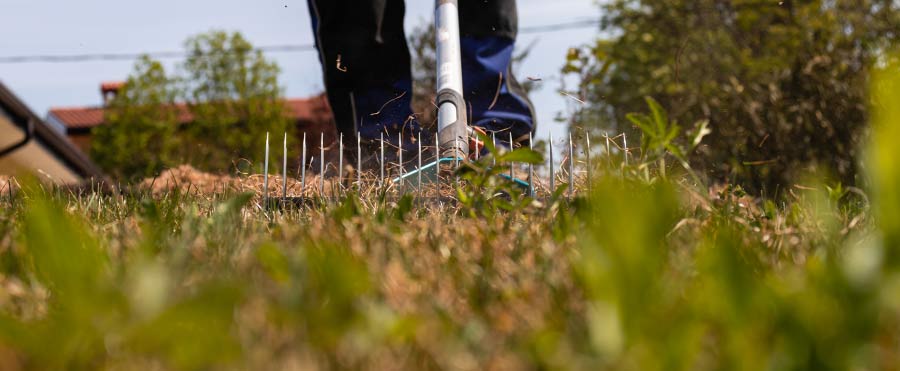
Begin preparing the lawn for landscaping grading by closely examining the roots of your grass. Assess your lawn’s amount of thatch.
The thatch is a mix of living and dead plant material in a layer where the grass stems meet the soil and roots.
A thatch greater than 1/4 to 1/2 inch will keep your grass from getting proper water and air.
If you have more than 1/2 inch remove the thatch.
For a smaller lawn, you can use a thatch rake. For larger lawns use a dethatching machine. Which you can rent at most home improvement stores.
STEP 3: Dig up the grass in the sunken area of the lawn
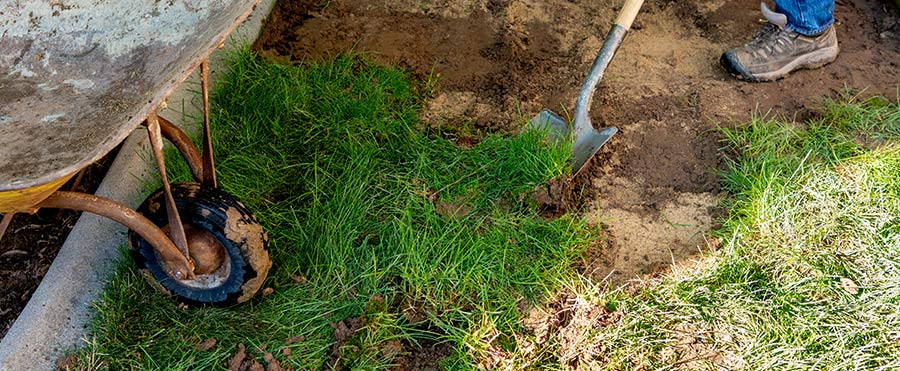
Check your yard for divots and low spots deeper than 2-3 inches.
Remove the grass from on top of them. To do this, put the blade of a shovel on the outer edge of a low spot. Slide it down and under about 2-3 inches to make sure you get under the roots of the grass. Then remove the sod by prying the grass up with the shovel. Exposing the dirt underneath.
STEP 4: Make Soil Mix: Topsoil, Sand and Compost
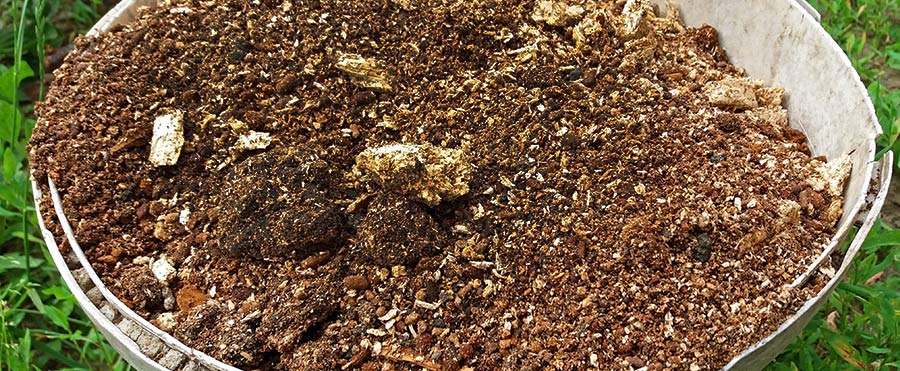
Make a top dressing mix to fill in the area beneath the grass in sunken areas of your lawn:
- 2 parts topsoil
- 2 parts sand
- 1 part compost
The soil and compost give your grass the nutrients it needs to thrive.
Sand on the other hand does not easily compact easily. Keeping your yard level over time.
STEP 5: Fill Sunken Areas and Holes with Soil Mixture
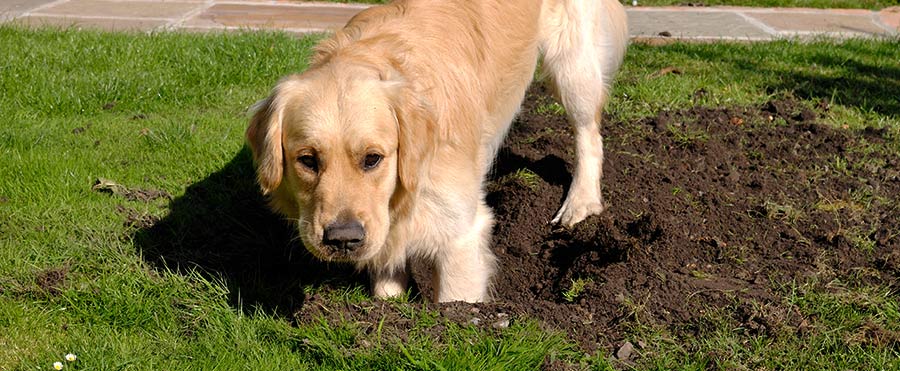
Fill the hole from step 3 with the mix from step 4. After filling the holes, be sure to place the grass back on top of it.
STEP 6: Even Out the Entire Lawn
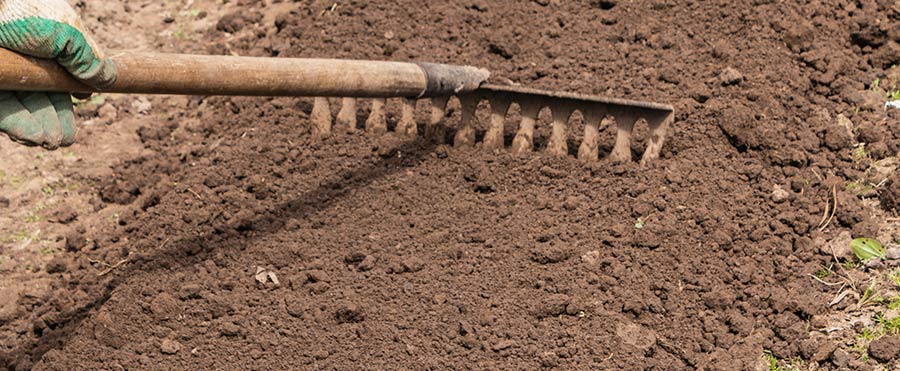
Once you have filled the holes and divots, cover your entire lawn with about 1/4 to 1/2 inches of the mix.
Keep this layer thin. Err on the side of caution. Even if you think you need more than 1/2 inch. If you put too much down, you may choke your grass.
If you still think you need more, you can reapply in step 8.
STEP 7: Water the Lawn
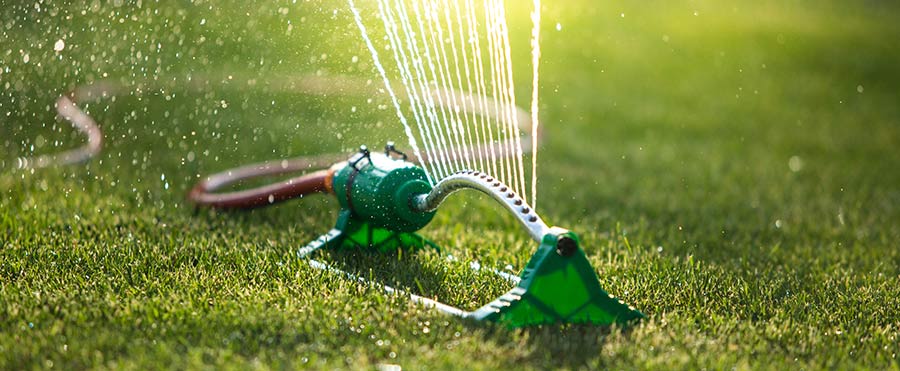
Run sprinklers to water your lawn. This will help the soil mix settle in the grass to fill air pockets, and revitalize your lawn.
Jumpstarting the introduction of the new nutrients from soil mixture.
STEP 8: Reapply Soil Mix [As Needed]
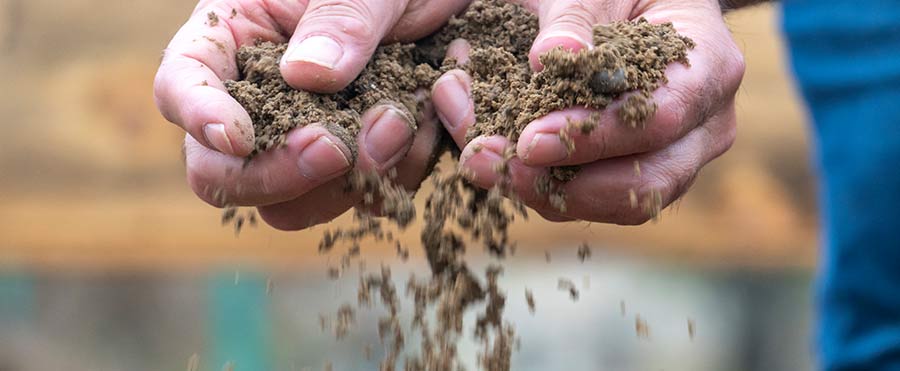
You might have to do more than 1 layer of the soil mix to completely level your yard.
You should apply the 2nd layer by repeating steps 5 and 6 after you see the grass begin to grow, or when you can’t see the first soil mix layer anymore.
That’s it. You’re done! Now you know how to level a yard.
Important Things to Remember While Yard Leveling
For best results keep these tips in mind:
- The best time to level your yard is during the dry season. If done during a rainy season there is a good chance for soil erosion
- Proper backfill at the foundation is very important. If the soil is too close to the wall cladding then you risk termites getting into your house
- Any soil removed from the lawn can be reused while grading
Conclusions on Landscape Grading
Leveling your yard is very important to protect your home and landscape from long-term damages and expensive costs to fix.
If your landscape grading issues are minor you can follow the 8 steps above on how to level a yard yourself.
However, if you have major issues with your lawn’s slope, you should contact a professional. They’ll know how to level a yard with more extensive issues. It may be that your landscape grading needs commercial-grade equipment, and a professional eye to identify all problems.
If you’re in southeast Pennsylvania, Cider Mill Landscapes may be able to help you. Fill out the form below for a free consultation or call us at: (484) 574-4666.
Still Have Questions on How to Level a Yard?
Here are some of the frequently asked question that we get on yard leveling.
How much will it cost to level my yard?
If you already have some basic tools, leveling your yard shouldn’t be too expensive, especially if you don’t have a lot of uneven areas to fix.
For motorized dethatching tools, you can find simple ones for as little as $100. While a thatching rake will go for about $35. Renting these tools is also an option, that will probably go for around $100/day, depending on the tools you choose.
Manual aerators are available for as little as $30, or you can spend up to $300 for more advanced models. Renting an aerator can cost around $90 per day. If you prefer to have a professional aerate your lawn for you, it can cost anywhere between $80 and $120.
As for the materials needed, they’re usually priced below $10 each. When it comes to grass seed, prices will go from $1.50 to $7 per pound.
What is the best time of year to level your yard?
The ideal time to level your yard is during the months of March to October. This is when your grass is in its active growing phase, which makes it easier to achieve a smooth and even surface.
However, consider your grass type.
For yards with warm-season grasses, late spring is the recommended time for leveling.
If your yard has cool-season grass, it’s best to level it during the fall season.
When is it not a good time to level my lawn?
There are certain situations when you should avoid leveling your lawn. If any of the following conditions apply, it’s best to hold off on leveling:
- When the ground is frozen.
- When the lawn is waterlogged or excessively wet.
- When your lawn is already stressed due to drought, diseases, or pests.
- When your lawn is currently undergoing treatments for other issues.
- In these cases, it’s important to allow your lawn to recover and stabilize before attempting any leveling activities.
Is it necessary to use topdressing for my lawn?
No, it is not necessary. However, applying a thin layer of topdressing to your lawn can provide more benefits than you might expect.
Besides helping to even out uneven areas, topdressing can also address other common issues such as:
- weed growth
- diseases
- poor drainage
- lackluster grass
It has the power to rejuvenate existing grass, breathing new life into it, or serve as a fresh foundation for planting new seeds.
Furthermore, topdressing can assist in improving aeration, enhancing soil quality, promoting seed germination, and facilitating the decomposition of thatch. Additionally, it introduces beneficial microbes from the compost, which help regulate the levels of important elements like nitrogen, carbon, and phosphorus in the soil.

